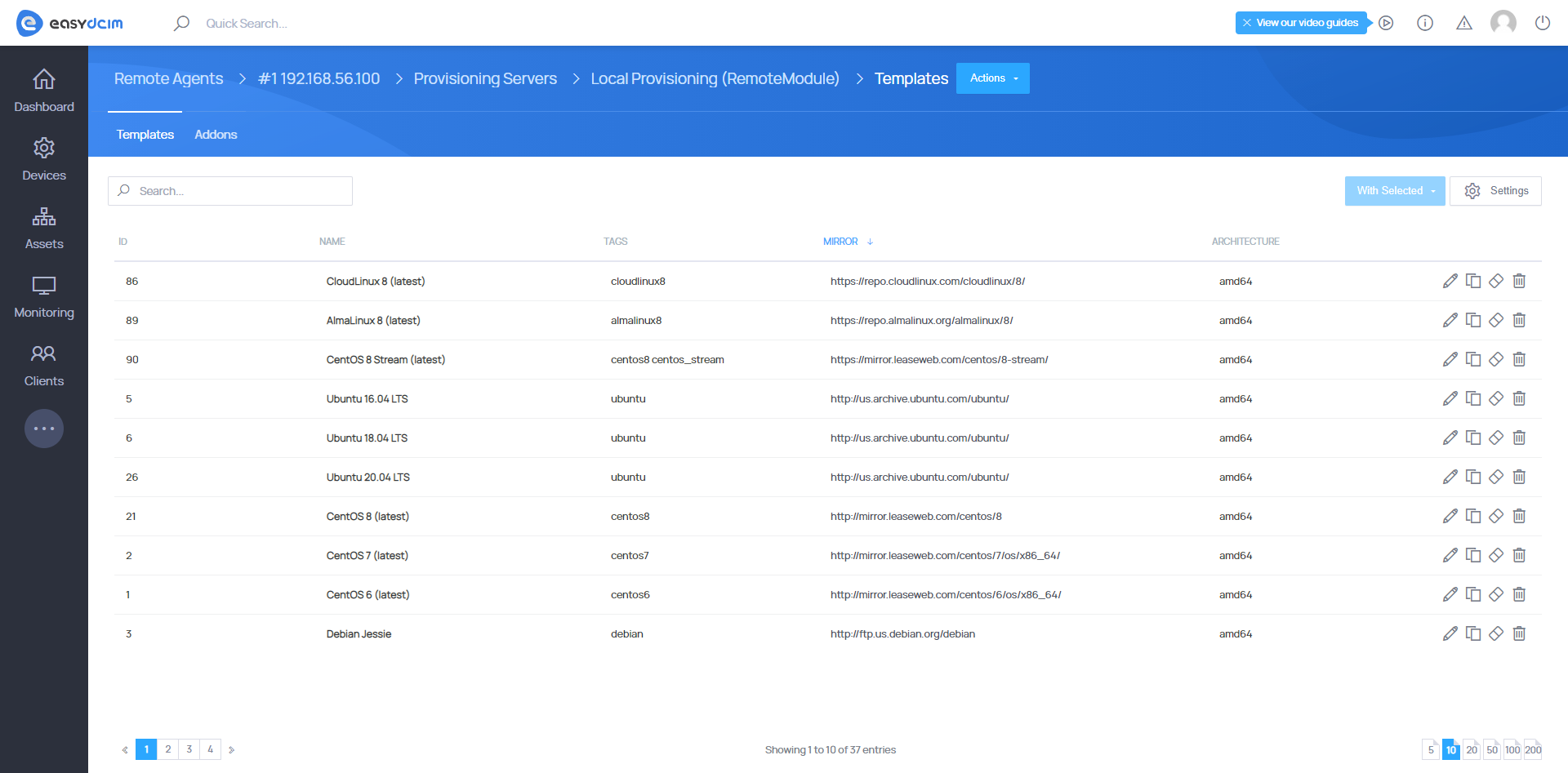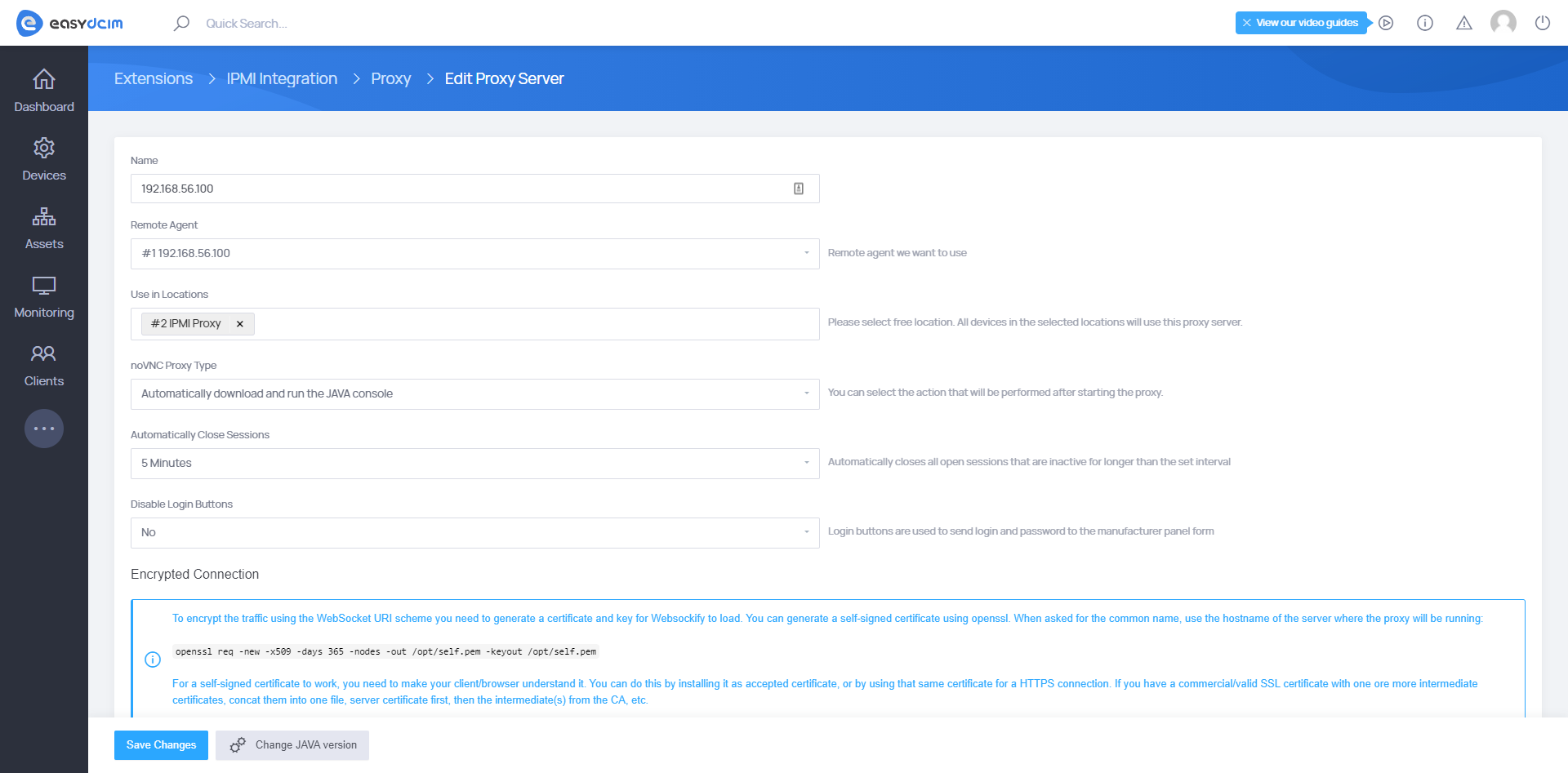What can safely be described as the end of an era is unfolding right before our eyes. The EOL of CentOS as we all know it. The news of this unlooked-for farewell that shocked the entire community triggers a rather obvious question: “What to do now?” To make answering a bit easier for you, we are today delivering our latest brainchild – EasyDCIM v1.7.4 kitted up with three entirely new system templates going hand in hand with a major bonus for IPMI proxy servers.
As for April 28th, 2021, CentOS Linux is actively used by 4.7% of all the websites whose operating system is known to public. However, that level is doomed to drop radically in the months to come, all because of the latest Red Hat announcement about shifting focus exclusively to CentOS Stream.
CentOS under the microscope
CentOS, which stands for the Community Enterprise Operating System, is a 100% rebuild of Red Hat Enterprise Linux. While RHEL is a paid product, CentOS has always had a definite advantage over it due to being a free community-inspired Linux distro. Developers and companies with first-hand experience in Linux in most cases have opted for CentOS to kill two birds with one stone – that is, to save money, and work with enterprise-class software at the same time.
But the free ride is over.
What’s next?
Even with the support for CentOS Linux 8 being maintained up until the end of 2021, many people are already considering replacement – and who could blame them? To spare you the research, we are sharing what we found to be among the no. 1 alternatives on the market.
1. AlmaLinux, created by CloudLinux and launched with the code-name Project Lenix, is a community-driven, free and open-source Linux operating system, self-proclaimed to be the perfect replacement for CentOS 8. The first stable version of AlmaLinux was released just a month ago, on March 30th, 2021.
✓ When asked “Why Alma?”, Igor Seletskiy, CEO & Founder of CloudLinux explained: “At CloudLinux, we have benefited from the dedicated, nourishing efforts of the Linux community – just like everyone else that relies on a Linux-powered OS. This community is the soul of Linux – and in the spirit of a dedicated community, we decided to call our new distribution Alma: a Latin-language word for soul.”
✓ Some others say AlmaLinux may owe its name to the goal of capturing the soul of CentOS.
✓ AlmaLinux created a non-profit organization called AlmaLinux Open Source Foundation meant to take over managing the future project development.
✓ CloudLinux granted a $1 million annual endowment to support AlmaLinux until at least 2029.
2. CloudLinux, the origins of which reach as far back as 2010, needs no special introduction. It is a community-supported Linux operating system known for delivering advanced management of resources, strengthened security and a high-quality performance tailored specifically towards the multi-tenant hosting ecosystem.
3. CentOS Stream is a logical and interesting alternative. It is a rolling-release distro, serving as the upstream development branch of RHEL. It has been brought into being as an initiative to bridge the gap between the surging Fedora and the latest stable release of CentOS.
The above analysis of the emerging trends in the data center space laid the groundwork for what has become a prime addition to the OS Installation For EasyDCIM extension. Updated vastly into the 1.9.2 version, it now features three entirely new system templates to ease the installation process of:
- AlmaLinux 8
- CloudLinux 8
- CentOS Stream 8
With so many alternatives available for immediate use, the demise of CentOS doesn’t sound so terrifying anymore, does it?
A new face of IPMI proxy servers
We wouldn’t be ourselves if we didn’t introduce at least one more enhancement to the brand-new release. And here it is! You probably think: “But IPMI proxy is hardly news”. Technically yes, but to make it work properly so far you had to configure an additional physical server, which in a way was a needless waste of the resources. Upon promoting the IPMI Integration For EasyDCIM extension to the 1.4.0 version, IPMI proxy servers have been moved to remote agents. Now all you need to do is configure a proxy server, and specify in the settings which remote agent should use it. No additional data to connect, no additional servers. Easy and resource-friendly!
Among the other new IPMI proxy-related features that made it into EasyDCIM you will spot:
- three predefined JAVA versions to choose from in place of just one
- an all-new possibility to change the JAVA version for a proxy server
- downloading JAVA KVM applets now taking place on the remote agent instead of on the EasyDCIM main server to avoid problems with network configuration
How did you take the news of the CentOS project coming to a close? Even if you consider the Red Hat’s decision to be a somewhat controversial move, you have no other choice but to face its consequences. But you do not have to shoot in the dark, luckily. Spare an extra minute to scroll through the rest of changes in EasyDCIM v1.7.4, and make it your most trusted business partner!





















